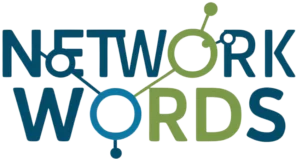Running Cisco Prime Infrastructure jobs
Running Cisco Prime Infrastructure jobs

🏃♂️💻 Are you struggling to keep up with the demands of managing your network infrastructure? Cisco Prime Infrastructure jobs might just be the solution you’ve been looking for. But for many IT professionals, the prospect of setting up and running these jobs can seem daunting and time-consuming.
Imagine a world where your network management tasks are automated, efficient, and error-free. A world where you can focus on strategic initiatives instead of getting bogged down by routine maintenance. That’s the power of mastering Cisco Prime Infrastructure jobs. From understanding the basics to implementing advanced techniques, this guide will take you on a journey to streamline your network operations and boost your productivity.
In this comprehensive blog post, we’ll explore the ins and outs of running Cisco Prime Infrastructure jobs. We’ll start by demystifying what these jobs are and how they work. Then, we’ll dive into the nitty-gritty of setting up jobs, explore key job categories, share best practices, and even reveal some advanced management techniques. So, buckle up and get ready to transform your network management game! 🚀
Understanding Cisco Prime Infrastructure Jobs
A. Definition and purpose of Cisco Prime jobs
Cisco Prime Infrastructure jobs are automated tasks designed to streamline network management and maintenance. These jobs allow administrators to schedule and execute various operations without manual intervention, enhancing efficiency and reducing human error.
B. Types of jobs available in Prime Infrastructure
Prime Infrastructure offers a diverse range of job types to cater to different network management needs:
- Configuration jobs
- Inventory collection jobs
- Compliance audits
- Software image management
- Report generation
- Backup and restore operations
| Job Type | Purpose |
|---|---|
| Configuration | Apply network changes automatically |
| Inventory | Collect device information periodically |
| Compliance | Ensure network adheres to policies |
| Image Management | Manage device software versions |
| Reporting | Generate scheduled network reports |
| Backup/Restore | Safeguard network configurations |
C. Benefits of using automated jobs
Automated jobs in Cisco Prime Infrastructure offer numerous advantages:
- Time-saving: Reduce manual effort for routine tasks
- Consistency: Ensure uniform execution of operations
- Scalability: Manage large networks efficiently
- Proactive management: Address issues before they escalate
- Improved visibility: Regular reporting and auditing
- Resource optimization: Schedule jobs during off-peak hours
By leveraging these automated jobs, network administrators can focus on strategic initiatives while ensuring optimal network performance and reliability. Next, we’ll explore how to set up these jobs in Cisco Prime Infrastructure for maximum effectiveness.
Setting Up Jobs in Cisco Prime Infrastructure
Accessing the job management interface
To begin setting up jobs in Cisco Prime Infrastructure, you’ll need to access the job management interface. Follow these steps:
- Log in to the Cisco Prime Infrastructure web interface
- Navigate to the “Administration” menu
- Select “Jobs Dashboard” from the dropdown options
The job management interface provides a comprehensive view of all existing jobs and allows you to create new ones.
Creating a new job
Once you’ve accessed the job management interface, follow these steps to create a new job:
- Click on the “Create Job” button
- Choose the job type from the available categories
- Provide a unique name for the job
- Select the devices or device groups the job will target
Configuring job parameters
Each job type has specific parameters that need to be configured. Here’s a general overview of common parameters:
| Parameter | Description |
|---|---|
| Schedule | Set the job execution time |
| Recurrence | Define if the job should repeat |
| Notification | Configure email alerts for job status |
| Timeout | Set maximum execution time |
Scheduling recurring jobs
For tasks that need to be performed regularly, scheduling recurring jobs is crucial. Here’s how to set up a recurring job:
- In the job configuration page, locate the “Schedule” section
- Select “Recurring” as the schedule type
- Choose the recurrence pattern (daily, weekly, monthly)
- Set the start date and time for the job
- Specify the end date or number of occurrences (if applicable)
By carefully configuring these settings, you can ensure that your Cisco Prime Infrastructure jobs run efficiently and consistently.
Key Job Categories in Prime Infrastructure

Discovery and inventory jobs
Discovery and inventory jobs are crucial for maintaining an up-to-date network topology. These jobs automatically scan the network to identify and catalog devices, providing administrators with a comprehensive view of their infrastructure.
- Network Discovery: Scans and identifies new devices
- Inventory Collection: Gathers detailed information about each device
- Topology Updates: Refreshes network maps and relationships
Configuration and compliance jobs
These jobs ensure network devices are properly configured and adhere to organizational policies. They help maintain consistency and security across the network.
| Job Type | Description | Frequency |
|---|---|---|
| Config Backup | Stores device configurations | Daily |
| Compliance Audit | Checks against policy rules | Weekly |
| Config Deploy | Pushes standardized configs | As needed |
Monitoring and reporting jobs
Monitoring and reporting jobs provide insights into network performance and health. They collect data, analyze trends, and generate reports for informed decision-making.
Backup and restore jobs
These jobs safeguard network configurations and data, enabling quick recovery in case of failures or misconfigurations.
- Device Config Backup: Regular backups of device configurations
- Database Backup: Preserves Prime Infrastructure data
- Restore Operations: Recovers configurations or system data
Software image management jobs
Software image management jobs streamline the process of updating and maintaining network device software.
- Image Import: Adds new software images to the repository
- Compatibility Check: Verifies image suitability for devices
- Distribution: Transfers images to network devices
- Activation: Installs and activates new software versions
Now that we’ve explored the key job categories in Prime Infrastructure, let’s move on to best practices for running these jobs effectively.
Best Practices for Running Jobs

Optimizing job performance
To maximize the efficiency of your Cisco Prime Infrastructure jobs, consider the following optimization techniques:
- Schedule jobs during off-peak hours
- Prioritize critical jobs
- Use parallel processing when possible
- Limit the scope of data collection
Implementing these strategies can significantly improve job performance and reduce system load. Here’s a comparison of performance impact:
| Optimization Technique | Performance Impact |
|---|---|
| Off-peak scheduling | High |
| Job prioritization | Medium |
| Parallel processing | High |
| Limited data scope | Medium |
Avoiding conflicts between jobs
Preventing job conflicts is crucial for maintaining system stability. Follow these best practices:
- Stagger job start times to avoid resource contention
- Group related jobs to minimize dependencies
- Use job dependencies to ensure proper execution order
- Regularly review and update job schedules
Monitoring job status and results
Effective monitoring is key to maintaining optimal job performance. Implement these monitoring practices:
- Set up email notifications for job completion and failures
- Regularly review job logs and performance metrics
- Utilize Prime Infrastructure’s built-in dashboard for real-time job status
- Create custom reports to track long-term job trends
Troubleshooting failed jobs
When jobs fail, quick resolution is essential. Follow this troubleshooting process:
- Review error messages in job logs
- Check system resources during job execution
- Verify network connectivity and device accessibility
- Test job parameters on a smaller scale
- Consult Cisco documentation or support for complex issues
By adhering to these best practices, you can ensure smooth operation of your Cisco Prime Infrastructure jobs, minimizing downtime and maximizing system efficiency. Next, we’ll explore advanced job management techniques to further enhance your Prime Infrastructure experience.
Advanced Job Management Techniques
Using job templates
Job templates in Cisco Prime Infrastructure are powerful tools that streamline the process of creating and managing recurring jobs. These pre-configured templates save time and ensure consistency across your network management tasks.
Here are some key benefits of using job templates:
- Standardization: Ensures uniform job configurations across the network
- Time-saving: Reduces setup time for frequently run jobs
- Error reduction: Minimizes human errors in job configurations
- Scalability: Easily apply templates to multiple devices or sites
| Template Type | Description | Use Case |
|---|---|---|
| Configuration | Pre-defined device configurations | Applying standard configs to new devices |
| Compliance | Checks for policy adherence | Regular security audits |
| Inventory | Collects device data | Periodic network inventory updates |
| Software Image | Manages device OS updates | Scheduled firmware upgrades |
Customizing job notifications
Effective job management requires timely and relevant notifications. Cisco Prime Infrastructure allows you to tailor notifications to your specific needs, ensuring you stay informed without being overwhelmed.
Key aspects of customizing job notifications:
- Notification triggers (e.g., job completion, failure, or warning)
- Notification methods (email, SMS, or in-app alerts)
- Recipient groups based on job type or criticality
- Content customization (including job details, error logs, or summary reports)
Integrating jobs with external systems
To maximize efficiency, Cisco Prime Infrastructure can integrate with external systems, creating a more comprehensive network management ecosystem. This integration allows for automated workflows and enhanced reporting capabilities.
Common integration scenarios include:
- Ticketing systems: Automatically create tickets for failed jobs
- CMDB: Update configuration management databases with job results
- Analytics platforms: Feed job data into BI tools for trend analysis
- Custom scripts: Trigger external scripts based on job outcomes
By leveraging these advanced job management techniques, network administrators can significantly improve their operational efficiency and maintain better control over their Cisco infrastructure.

Effective job management in Cisco Prime Infrastructure is crucial for network administrators to streamline operations and maintain optimal network performance. By understanding the various job categories, implementing best practices, and utilizing advanced management techniques, you can maximize the efficiency of your network infrastructure.
Remember to regularly review and optimize your job configurations to align with your organization’s evolving needs. By leveraging the full potential of Cisco Prime Infrastructure’s job management capabilities, you’ll be well-equipped to proactively manage your network, reduce downtime, and enhance overall operational effectiveness.











